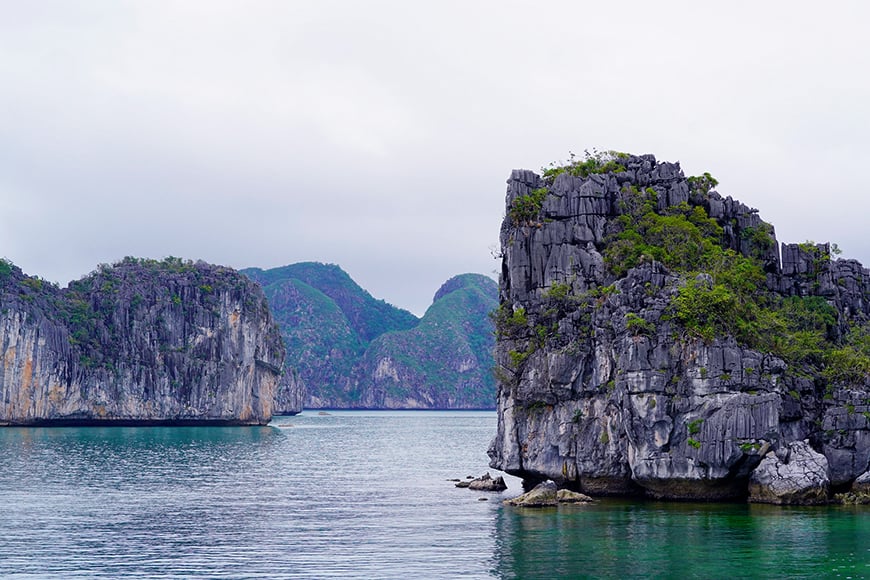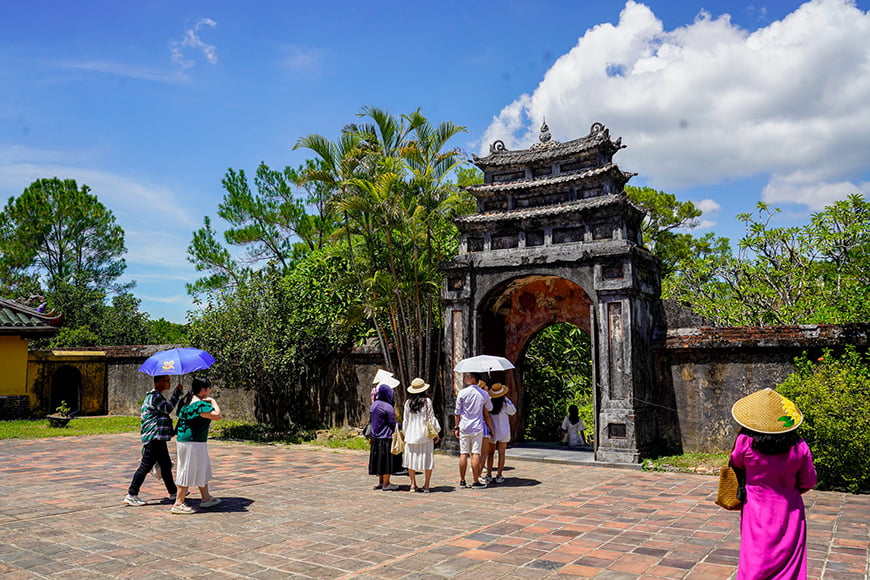Introduction
The era when Vietnam was only served by the three major gateways of Hanoi, Ho Chi Minh City, and Da Nang is over. Amidst structural overheating, the country has transformed its air network to face exponential growth. This growth is driven by rapidly increasing international traffic (+11% arrivals during the first 10 months of 2025) and colossal domestic traffic. The Hanoi–Ho Chi Minh City route is also the third busiest route in the world.
Air growth and the imperative of decentralization
The Vietnamese aviation sector is experiencing intense saturation, with total passenger traffic reaching nearly 100 million over the first 10 months of 2025, marking a significant growth of nearly 7%. This pressure is concentrated on domestic routes, which are among the most heavily used in the world. Besides the 3rd world ranking of the Hanoi (HAN) – Ho Chi Minh City (SGN) axis, the Da Nang (DAD) – Hanoi (HAN) route has made a breakthrough to 8th place.
Facing this saturation, the national strategy has shifted to decentralization, using regional airports to target specific markets and relieve the major hubs.
- ♦ Cam Ranh (CXR), serving Nha Trang, is strongly oriented towards international mass tourism, with 22 international airlines.
- ♦ Phú Quốc Airport (PQC) saw a spectacular 74.1% growth in international tourists over the first seven months of 2025, attracting long-haul charter flights.
► Read also : When to travel to Vietnam?
 Noi Bai Airport, Hanoi : the gateway to the spectacular landscapes of Northern Vietnam
Noi Bai Airport, Hanoi : the gateway to the spectacular landscapes of Northern VietnamThe three historical and strategic pillars
Historically, the network has revolved around three pillars, which served as the main gateways: Tân Sơn Nhất (South), Nội Bài (North), and to a lesser extent Đà Nẵng (Central).
Nội Bài (HAN): The Northern gateway
Originally military, it has become the main hub for Hanoi and serves as the main base for the national carrier Vietnam Airlines.
The North offers a deep immersion in history, culture, and spectacular natural landscapes:
- ✓ Hanoi (Old Quarter, Hoàn Kiếm Lake, Ho Chi Minh Mausoleum).
- ✓ Hạ Long Bay (UNESCO World Heritage Natural Wonder).
- ✓ Sapa and the Northwest (Terraced rice fields).
- ✓ Ninh Bình (Terrestrial Hạ Long Bay).
► Trekking on the Trails of Northern Vietnam 9 days 8 nights
 Da Nang Airport,a strategic pivot in Central Vietnam
Da Nang Airport,a strategic pivot in Central VietnamĐà Nẵng (DAD): The Central pivot
Built by the French then massively developed by the United States, Da Nang is a strategic pivot. Thanks to its exceptional proximity (2 km from the city centre), it is the gateway to the "World Heritage Triangle".
The Centre is the historical heart of Vietnam:
- ✓ Huế (Former Imperial Citadel, UNESCO).
- ✓ Hội An (Preserved Old Town, UNESCO).
- ✓ Mỹ Sơn Sanctuary (Champa ruins, UNESCO).
- ✓ Phong Nha-Kẻ Bàng National Park (Phenomenal caves, UNESCO).
► Central Vietnam Adventure Trekking 7 days 6 nights
 Tan Son Nhat, the overcrowded airport, opening onto the torpor of the Mekong Delta
Tan Son Nhat, the overcrowded airport, opening onto the torpor of the Mekong DeltaTân Sơn Nhất (SGN): The Southern engine
Located in Ho Chi Minh City, Tân Sơn Nhất was one of the busiest airports in the world between 1968 and 1974. Its proximity (6 km from the city center) is the cause of its chronic overcrowding, having welcomed 41.1 million passengers in 2019 against a theoretical capacity of 28 million.
SGN is the gateway to the South, an economic engine and access to the Mekong Delta. The new Terminal 3 (T3), inaugurated in 2025, aims to relieve domestic traffic congestion.
The major attractions are:
- ✓ Ho Chi Minh City (Urban energy, colonial architecture).
- ✓ Mekong Delta (River life, floating markets).
► Cat Tien Wild Adventures Trekking 3 days 2 nights
 Lan Ha Bay, pure jewel of the Northeast of Vietnam | Mr Linh's Adventures
Lan Ha Bay, pure jewel of the Northeast of Vietnam | Mr Linh's AdventuresLong Thành (LTA): The future Southern mega-hub
To ensure long-term fluidity, Vietnam is building the Long Thành (LTA) project in Đồng Nai province. This new giant is the foundation for a strategic hub for Southeast Asia, guaranteeing a capacity equal to Vietnam's tourism potential.
The project in a few words
- ♦ Objective: To become the largest airport in Vietnam and one of the major transit hubs in Southeast Asia.
- ♦ Capacity: Projected to reach 100 million passengers and 5 million tons of freight per year in its final phase.
- ♦ Role after opening: LTA is intended to take over most of the international traffic in the Southern region. Tân Sơn Nhất (SGN) will then focus mainly on domestic flights, significantly reducing the urban congestion it generates.
- ♦ Current Status: The project is under construction, with commercial opening estimated for the coming years (the government is targeting 2026 for the first phase – to be followed...).
It represents a massive investment and is accompanied by the development of road (highways) and rail infrastructures to connect it to Ho Chi Minh City and the surrounding regions.
Long Thành is the cornerstone of the future aviation and tourism development strategy for the South, allowing both the management of a massive volume of passengers and better channeling travelers towards the riches of the Delta and Ho Chi Minh City.
 Hue, Central Vietnam : the imperial heritage | Mr Linh's Adventures
Hue, Central Vietnam : the imperial heritage | Mr Linh's AdventuresTravelers, what this means for you
This evolution of Vietnam's air network means two things for travelers:
1. More flexibility: It is now easier to land directly near your final destination (e.g., Nha Trang via Cam Ranh, Phu Quoc Island), reducing long and congested ground transfers.
2. Less congestion in cities: LTA's goal is to take over international traffic from the south, allowing Tân Sơn Nhất (SGN) to focus on domestic flights. This should eventually reduce the chronic overload at SGN and urban congestion around Ho Chi Minh City.
Good to know: For detailed information on the airports of Vietnam, go to the
official website of the ACV (Airports Corporation of Vietnam.
 The Mekong Delta : a journey inside the journey | Mr Linh's Adventures
The Mekong Delta : a journey inside the journey | Mr Linh's AdventuresThe great takeoff
The evolution of the Vietnamese airport landscape reflects the country's economic growth and tourism ambition. Starting from the dominance of the "three pillars", with a historically overloaded Tân Sơn Nhất, the strategy has shifted towards decentralization which highlights the unique attractions of each region: the cultural effervescence of the North, the imperial heritage of the Centre, and the river life of the Mekong Delta in the South.
The arrival of the colossal Long Thành is not just an infrastructure project, but the foundation for a strategic hub for Southeast Asia, guaranteeing Vietnam a capacity equal to its tourism potential.